Scotland - Loch Duich to Carrbridge 🏴
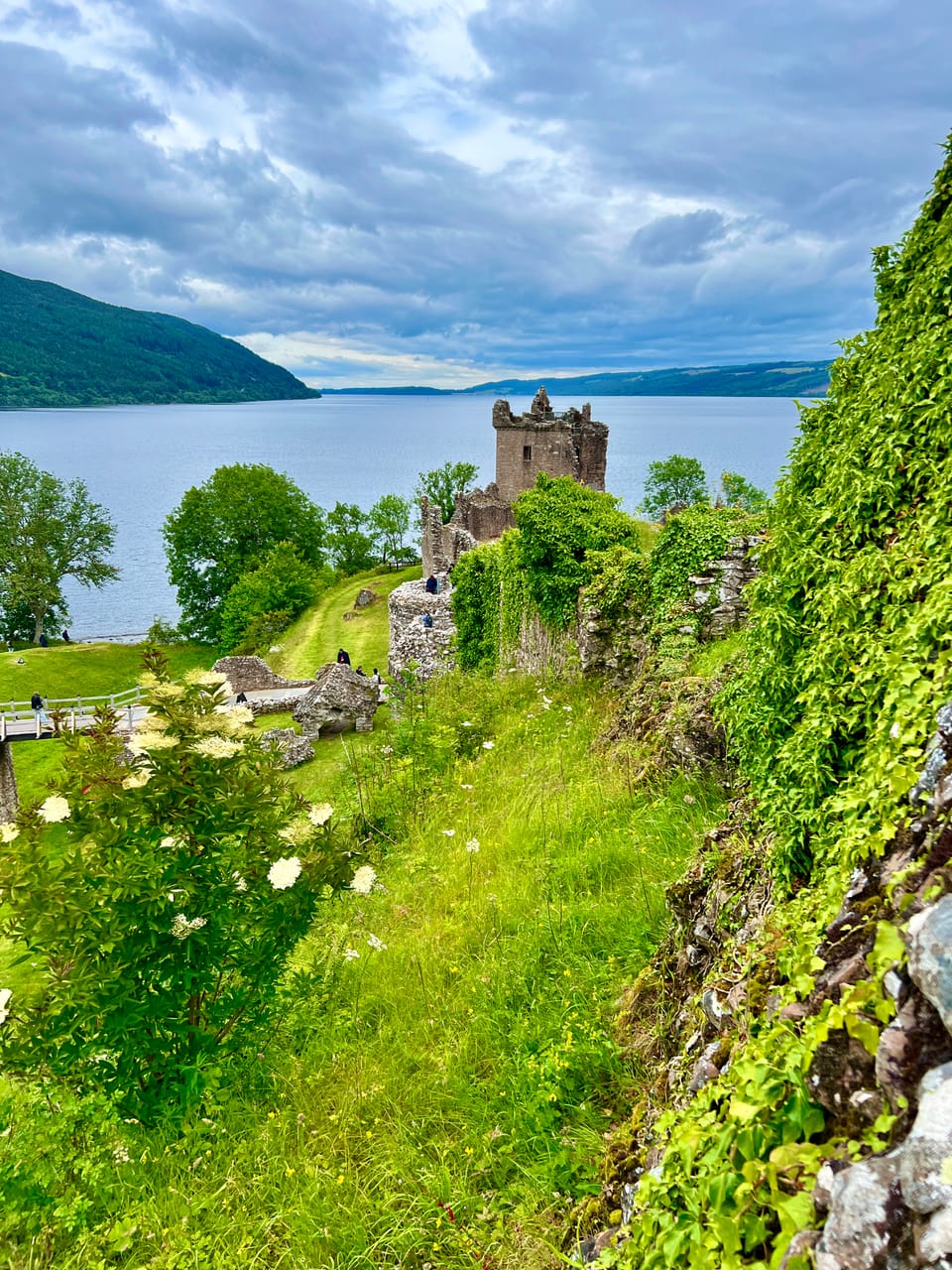
Car Problems
We got moving pretty early as our goal was to travel from the Loch Duich area to the Cairngorm Mountains. All was going well until we turned on the car and got a tire pressure warning. Sure enough, somewhere on our adventures we picked up a screw. Fortunately it was in the thick part of the tire thread and the pressure was down just a pound or so. Not sure why, but they do not include spare tires in rental cars (not even donut tires). Since we were in the middle of no where we decided to head toward civilization and look for a place to get the tired repaired (hopefully in Inverness - the largest town in the region). We thought if it got worse, at least we’d be closer to a place where we could get roadside service. We were pretty sure this was going to blow up our plans for the day but we were determined to make the best of it.
Urquhart Castle
We had planned to stop at Urquart Castle on the way to Inverness. It’s probably the most photographed castle on Loch Ness and one I’m pretty sure you’ve all seen in almost any pictures you’ve seen of Loch Ness. By the time we had reached it, the tire pressure hadn’t changed so we figured we’d stop and check it out.
For more than a 1000 years this castle has seen a lot of conflict in the region. During the war of independence between Scotland and England, this castle changed hands several times. It was interesting to see how the place had changed, been built up and destroyed (blown up by the Scottish) in order to ensure that it would not be captured and held as a stronghold by the British.
Being a proper castle it too had a murder hole! 🤣

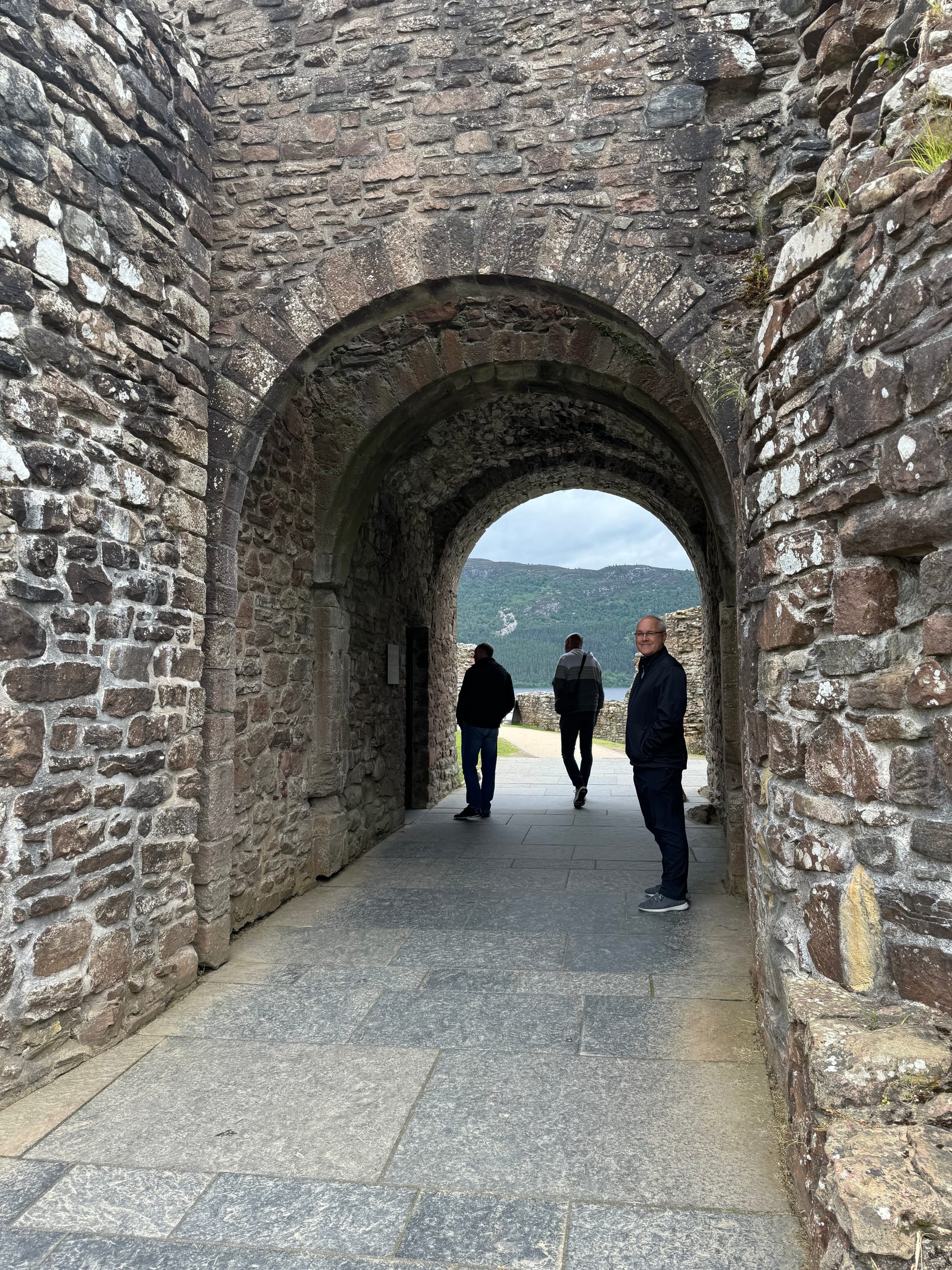
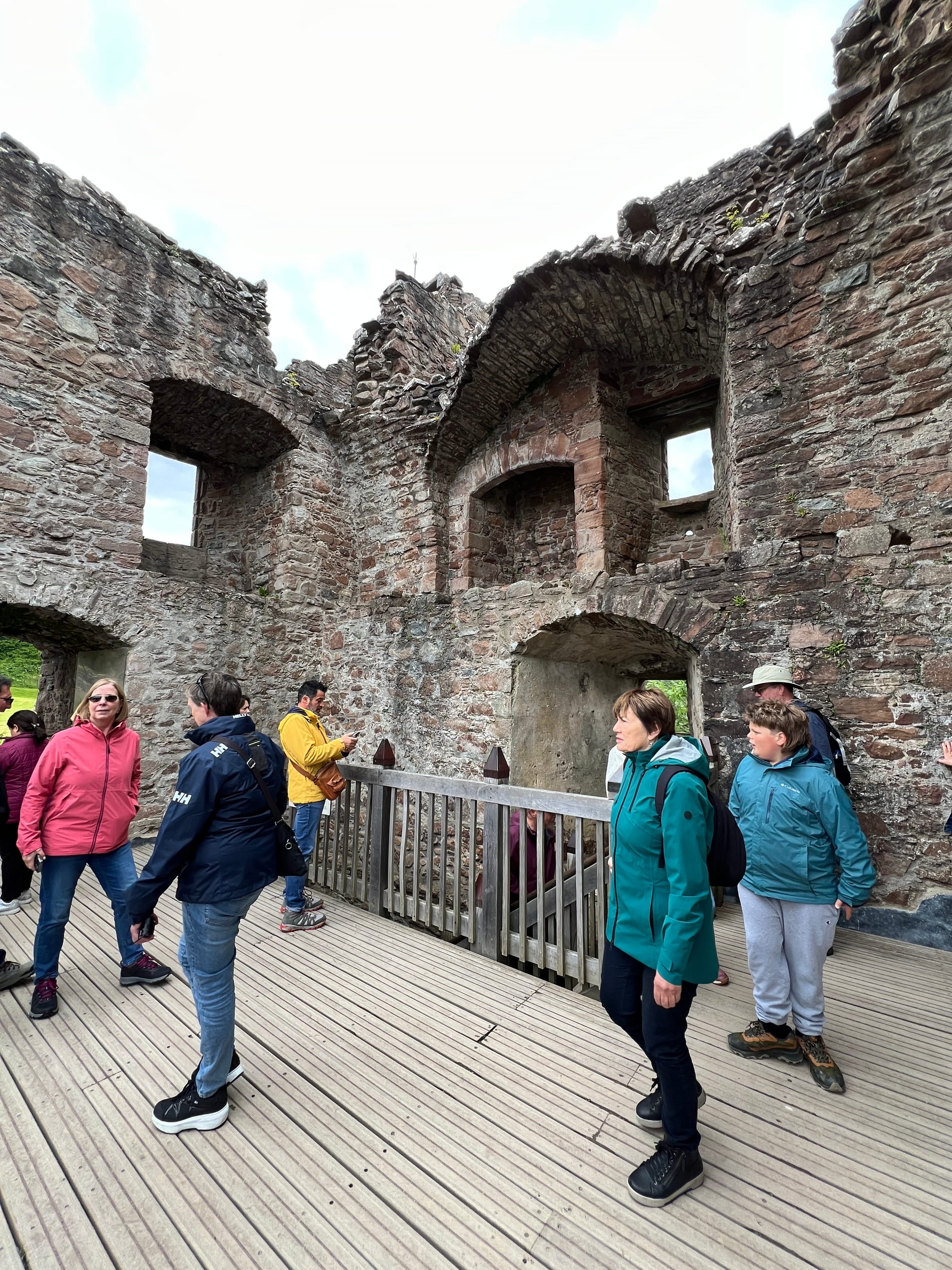
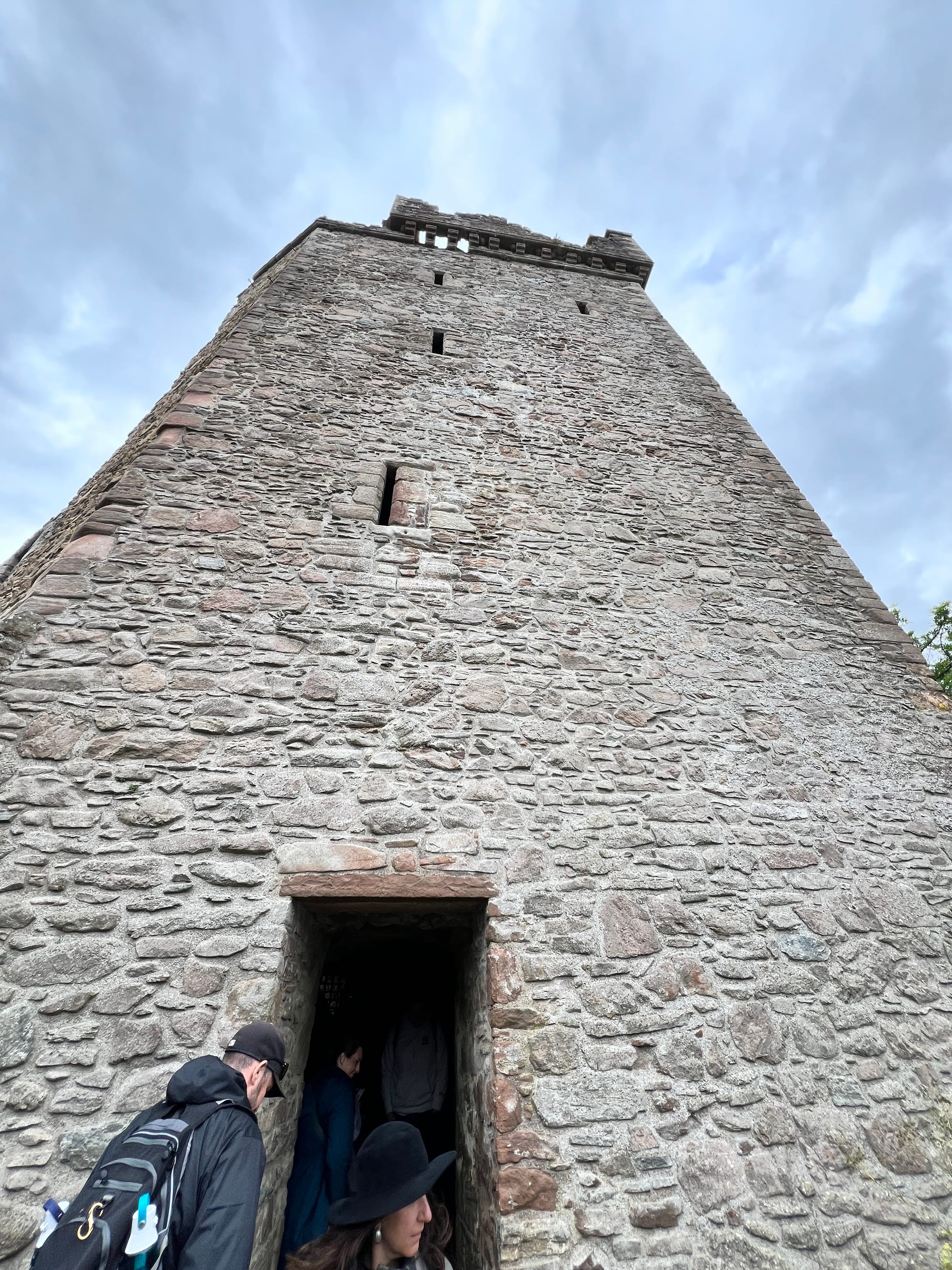

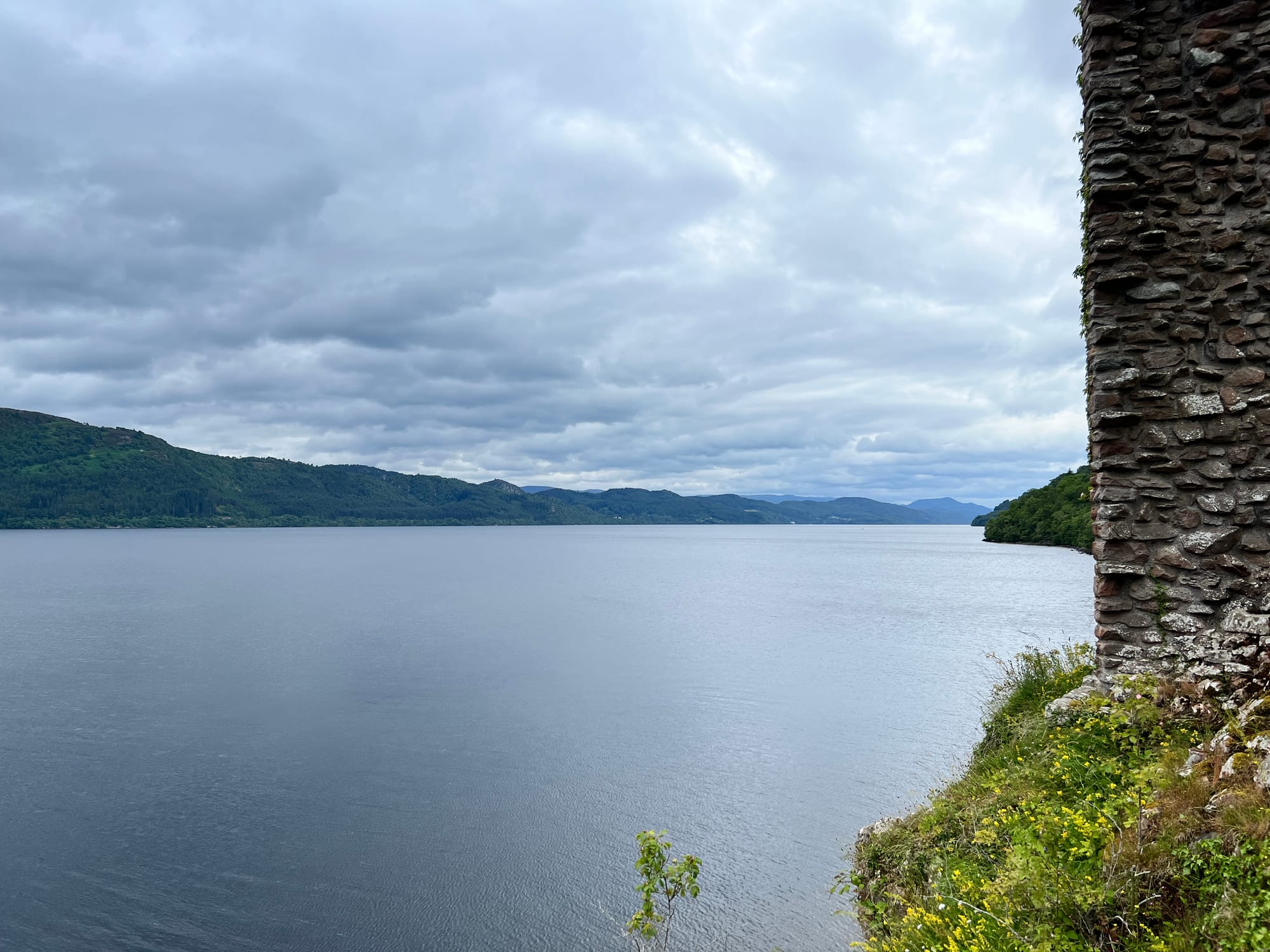
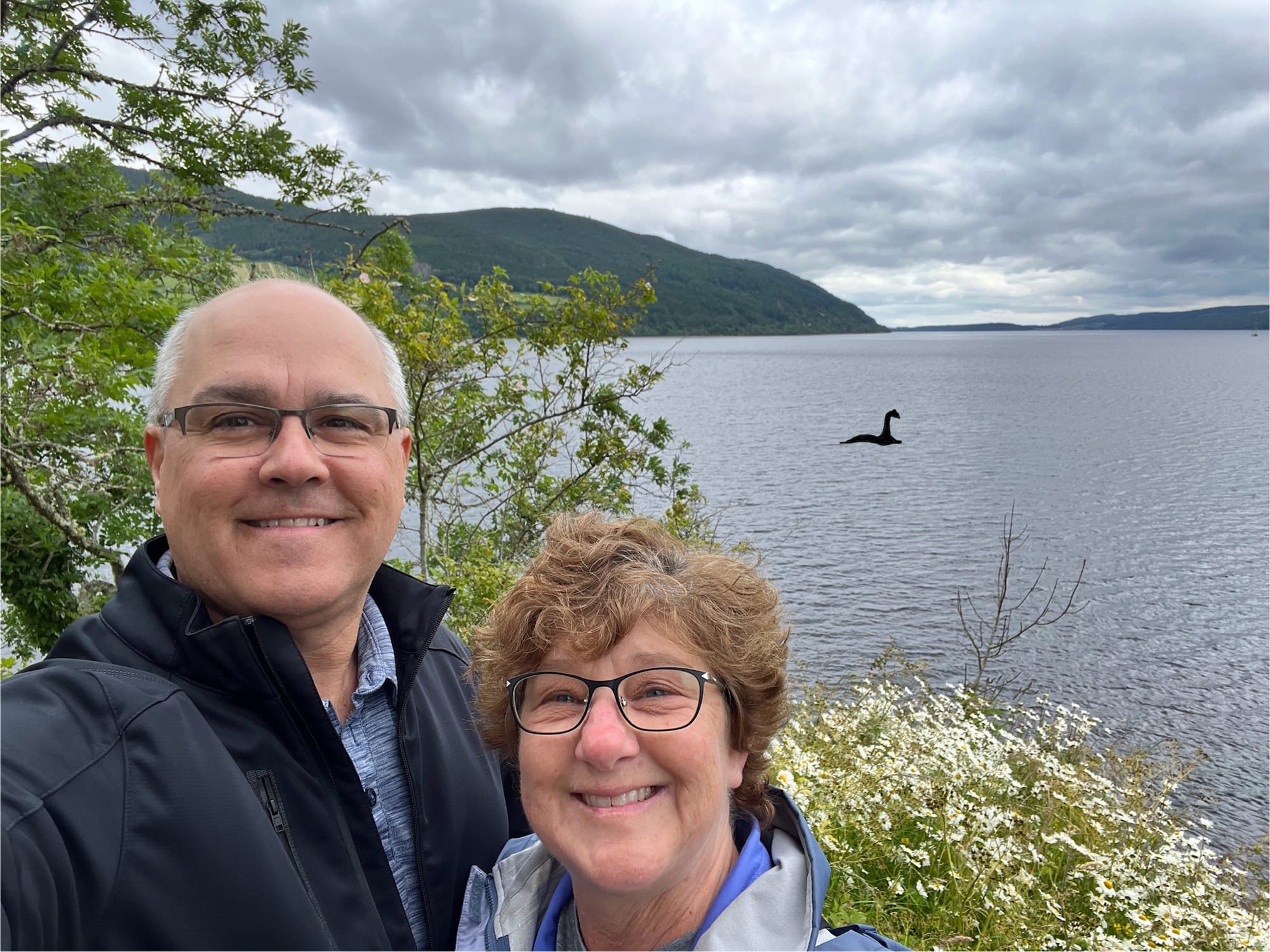
I’m not sure what all the fuss is about on Loch Ness! Seemed like just another lake. 😄
We motored on towards Inverness. We were planning to see the lock system that connected Loch Ness to the ocean. You see, Loch Ness and several other Loch’s were created 400 million years ago as part of the Great Glen Fault. This is where two techtonic plates slammed together. If you take a look at a map of Scotland you can see the fault cutting through the country from north east to south west. Anyway, someone thought it would be a good idea to connect these Lochs with a canal and lock system called the Caledonian Canal. This canal would eliminate the need to sail around the north west coast of Scotland by cutting through this area by boat. By the time the locks were finished, trains were taking over the role of moving goods around Scotland and England and thus these never became a viable enterprise. Regardless, they are still in use today by pleasure craft and tourist boats.
We made it to Inverness and to the best rated tire shop in the town. Wouldn’t you know it the shop was closed as the owner was on a two week vacation. Pfffft. Fortunately, Cathy spoke to the business owner next door and he recommended another shop in town. We pulled in to a very busy shop and a guy named Craig helped us out. Even though they were fully booked, he fit us into their lunch hour. He even suggested a great little restaurant where we could grab some lunch while they made the repair.
We walked to the restaurant and had a nice little meal. I got a sandwich that could best be described as a haggis melt. Never having had haggis before I wasn’t too sure what to expect but it was delicious (Cathy thought so too). As many of you know I like to try things and I kept seeing this drink called IrnBru all over Scotland. I asked the waitress what it tasted like and she paused and said, it’s indescribable. The can said it had a secret recipe since 1901 so I figured it can’t be that bad, right?. My interest was greater than ever so I ordered one. Hmmm, how to describe the indescribable. I agreed that it was pretty hard to describe but my best description would be “kind of like a carbonated orange jello”. There’s definitely something else in there that I can’t describe. Cathy did not care for it. If you ever get a chance, you should try one yourself and let me know what you think of it.

After our delicious lunch we scurried back to the tire shop. The previous day we had booked a tour at the Tomatin distillery (the last open slot for days) and were worried that we’d lose our slot. We arrived back at the shop to find the car done, ready to go and a bill for 25€ which we thought was a bargain. Into the car and a race to Tomatin, we just might make it.
Tomatin Distillery
Tomatin’s history dates back to the 1700’s when it was likely a bootleg operation to avoid the tax man. It went legit in 1897 but closed in 1906. Fortunately it was purchased by an experienced Wine and Liquor merchant who brought 2 stills back into production. Tomatin experienced a boon after the end of WWII when scotch demand increased tremendously and Tomatin responded by growing. By 1974, Tomatin has 23 operating stills producing 12.5 million liters of spirit a year making it the largest malt distillery in the world. The recession of the 1980’s saw several distilleries close down, mostly those with outdated techniques and machinery. The closure of Tomatin stood out as it had largely updated technology and processes. It didn’t stay closed for long and was purchased by two Japanese whiskey producers to add to their spirits portfolio. Under new management they have shutdown almost half their production to focus on quality over quantity.
We arrived at Tomatin with about 2 minutes to spare before our tour. Our tour group consisted of 16 young people (18 to about 25), on holiday from London, Cathy and me. They were a fun group and for some, this was their first time drinking alcohol (and/or scotch specifically). Not probably the choice I would make for my first alcohol sampling.
This tour was a bit different than the other distillery tours as we were allowed to go into the production facilities and take pictures everywhere but in the room with the pot stills. A lot of the facility was not producing as they typically shutdown in July as it was the time when the stream that supplied their water would dry up. That schedule stuck even though their stream hasn’t dried up in decades.
One thing that really stood out on the tour was the barrel room. They showed barrels with the dates they were distilled. Our guide told us about a series of bottles from an 50 year old barrel. The bottles went for over 10,000£’s a piece at auction. We all thought this was pretty amazing and then I caught this little jem.

Our guides suggestion was to buy two barrels, one to keep for a decade and enjoy and one to hang on to for 50 years to sell. At 10K a barrel we decided to go for two of them. Yeah, right!
Well, the tours is over so let’s get on to the tasting. They offered us three generous tastings:
- Legacy - a malt whisky aged in combination of Bourbon and Virgin Oak barrels
- 12 Year - a malk whiskey aged in Bourbon barrels and Sherry Casks
- Cù Bòcan - a lightly peated whiskey aged in Sherry Casks and Virgin Oak barrels
My favorite was the Cù Bòcan. I’ve never been a huge fan of heavily pleated Scotch so it surprised me that I like this one the most. The smokey amora was amazing and the initial taste and finish were really nice. Cathy liked the 12 year. Since I was driving I only got to sample a very small portion of my tasting but they gave us some cool little vials to take it with us for later.
Carrbridge
Our Airbnb was located in Carrbridge which was a small little village on the edge of the Cairngorm’s National Park in the heart of the Scottish highlands. This was the first Airbnb that we stayed in that was just a room, not the entire unit. We were apprehensive as we imagined a weird dynamic being in someone’s house. Upon meeting our hosts that concern quickly disappeared. They were wonderful, down to earth people with a beautiful home. It didn’t hurt that they had a beautiful black lab named Kai who loved people. Toy in mouth, tail excitedly wagging, he instantly reminded us of Luna.
Our host recommended we stroll down to the local pub for dinner and encouraged us to check out the bridge for which the town was named. Along the way we saw these strangely pattern cows and decided that we would rebrand them “oreo“ cows. Maybe we were just hungry.

The pub was exactly what I would have expected a Scottish pub would be in a small Scottish village. The food, drinks and service were all great. I could see why people would love to hang out here. By the time we’d finished our meal, the place was hoppin’.
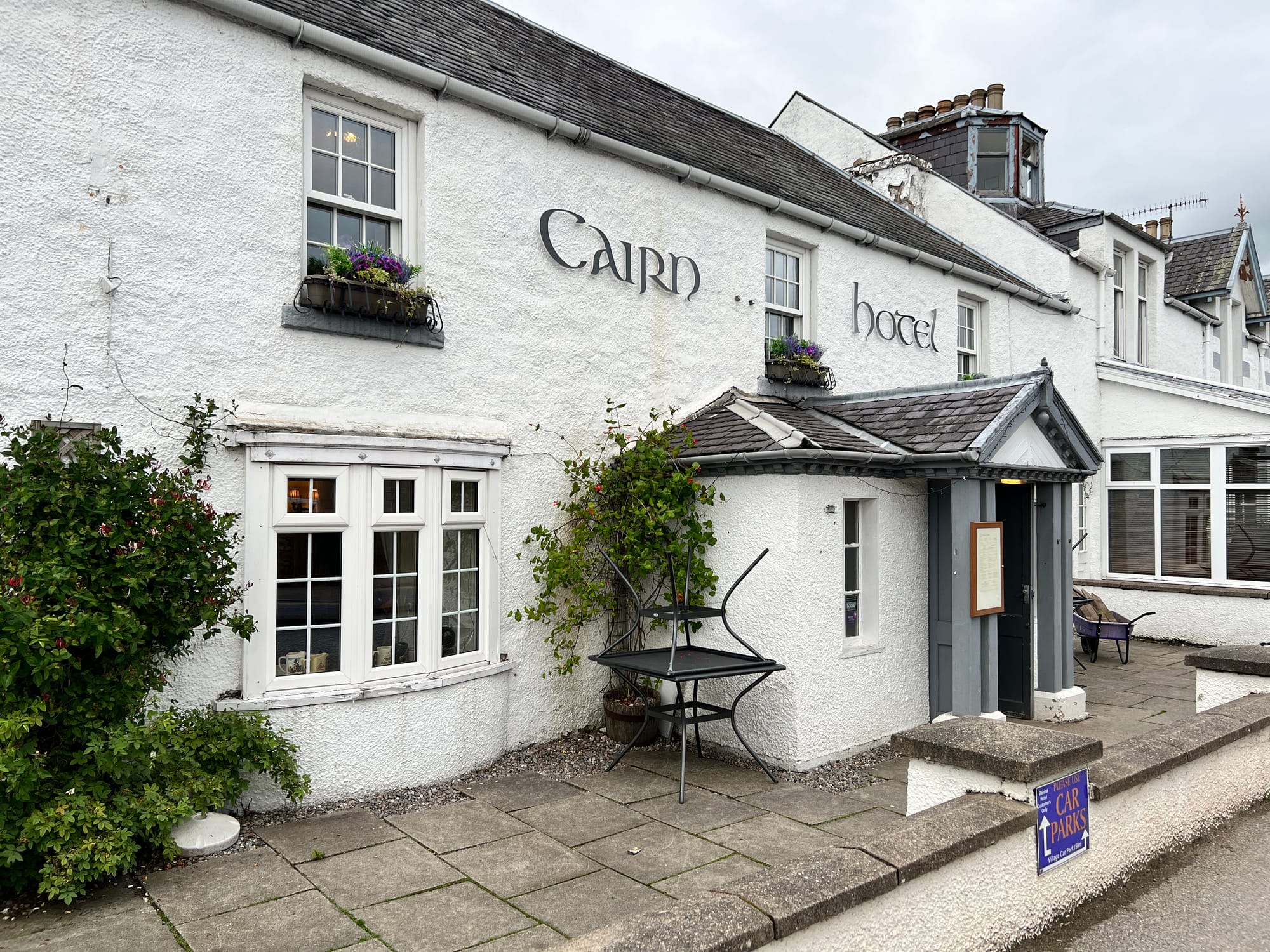
After dinner we strolled a couple of blocks to check out the Carr Bridge. The primary impetus to build this bridge was to get coffins from one side to the other as to not delay burials at the church. According to our Airbnb host, the river it crosses can become quite treacherous. Regardless, it’s still beautiful, even as a ruin.
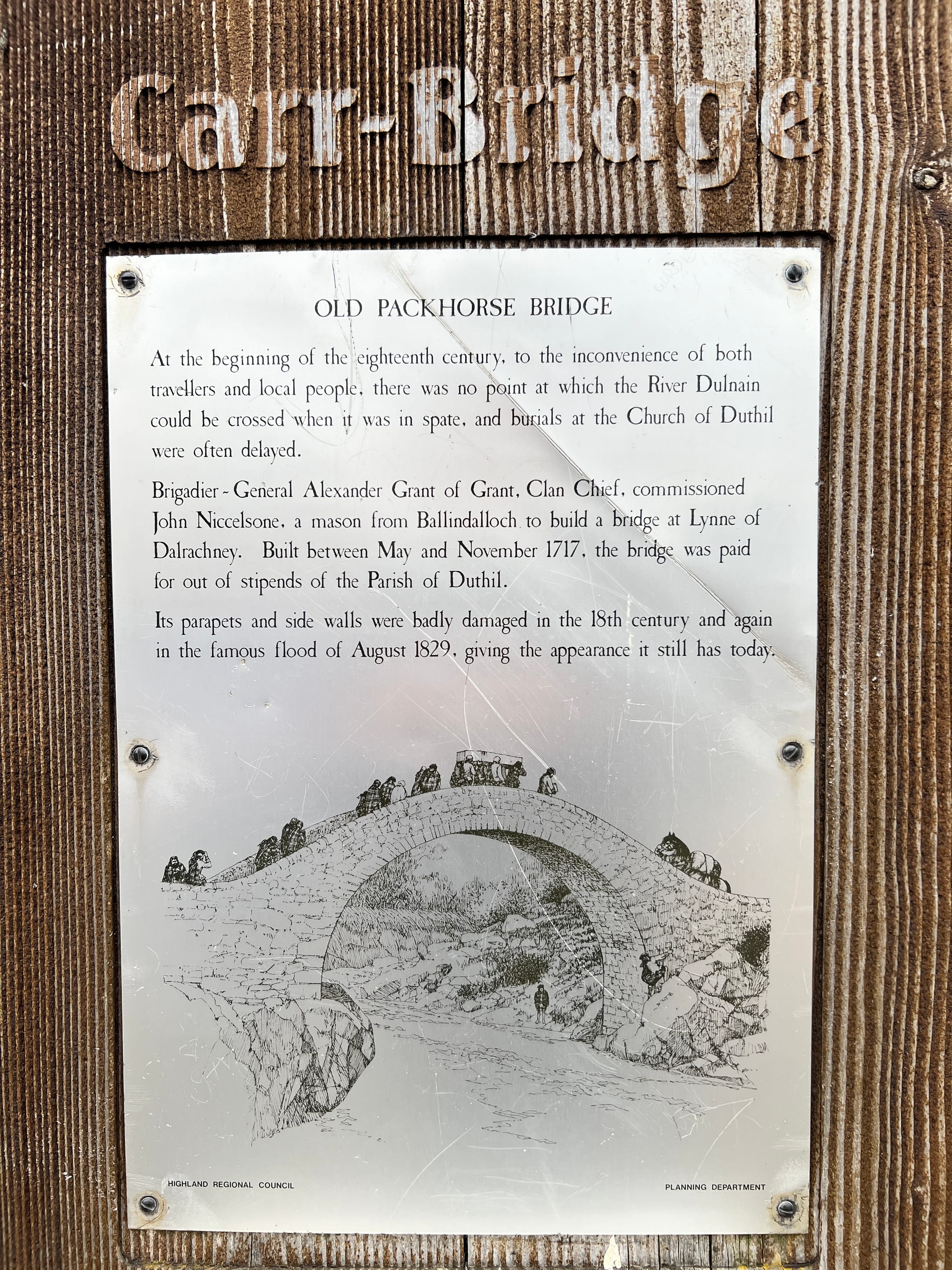

Given how the day started we felt really fortunate about how well the day ended up. All in all it was a very good day.

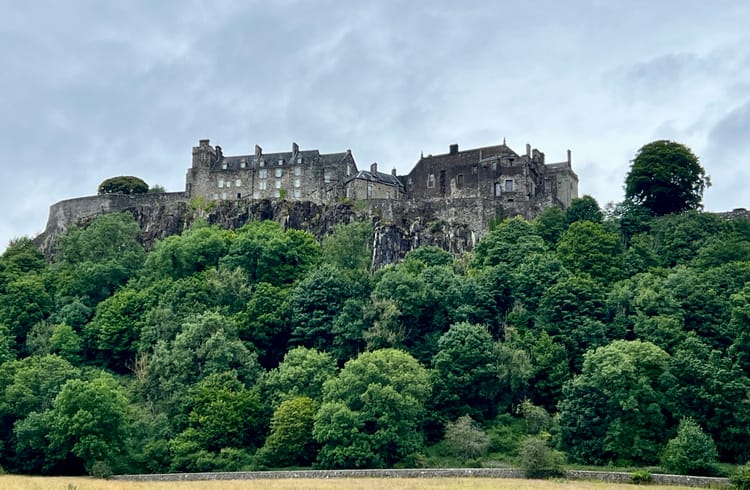

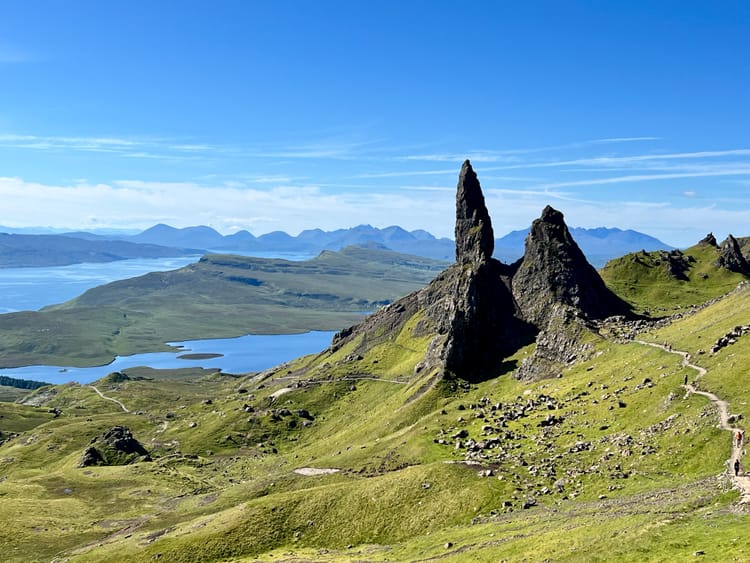
Member discussion